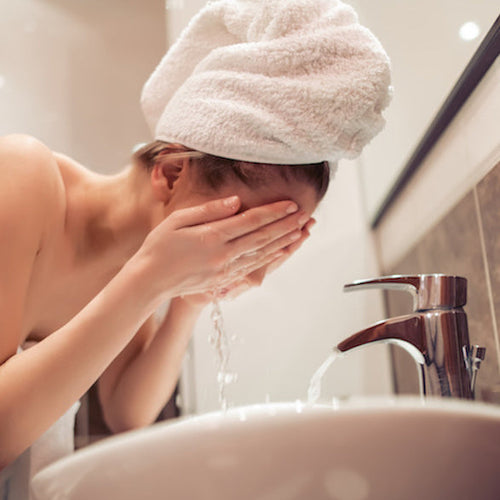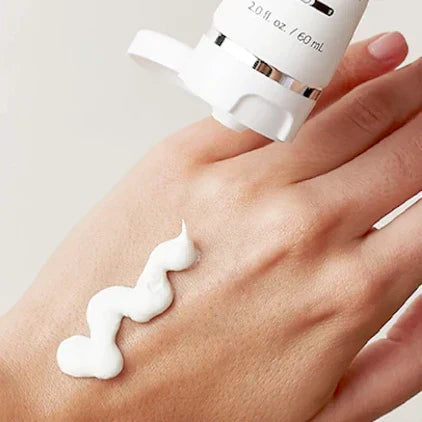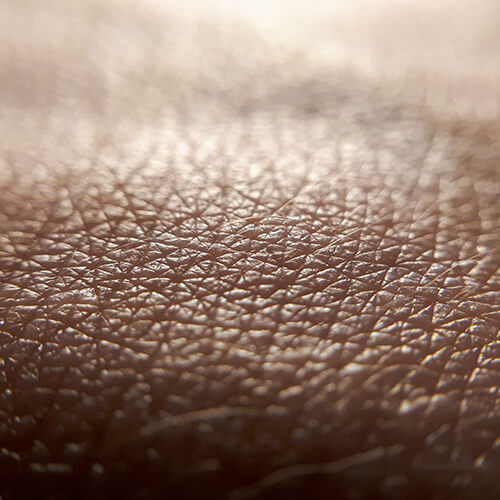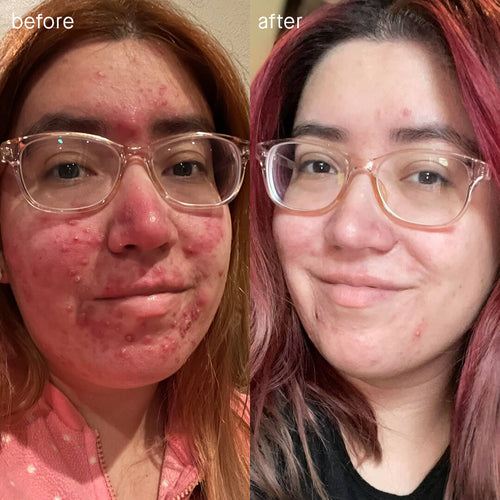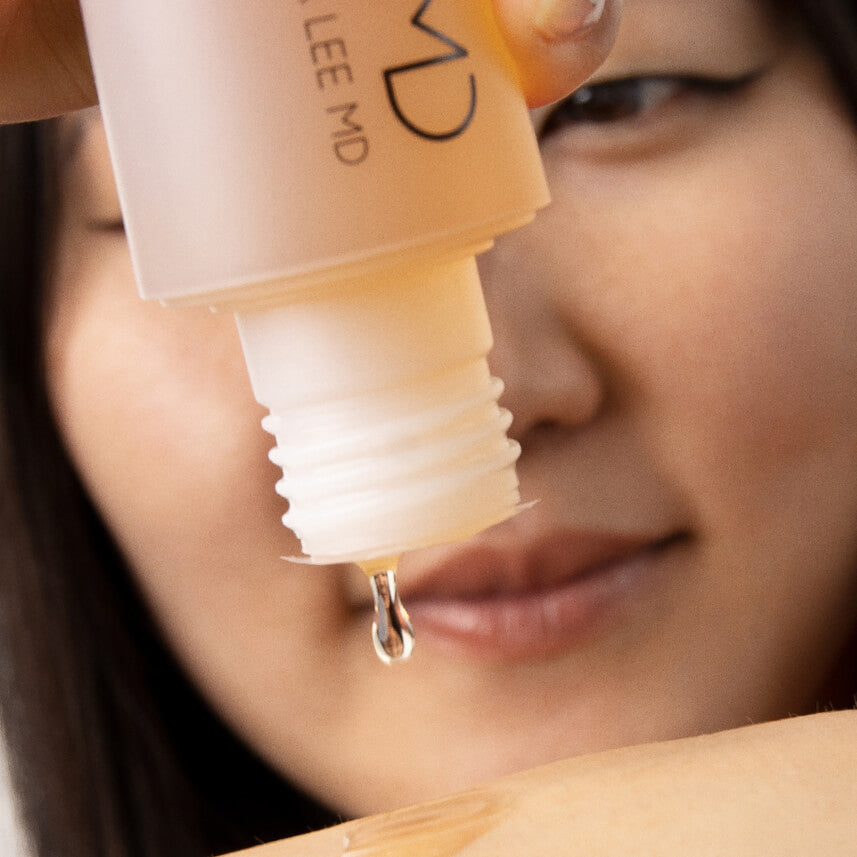
What Does Toner Do for Your Face?
When it comes to toner, most of us have no idea why anyone would splash "glorified water" on their face. The truth is, toner has come a long way, tackling a range of skincare goals — from managing acne to fighting fine lines. Find out why Dr. Sandra Lee (aka Dr. Pimple Popper) thinks it’s time you give toner a try.
Published:
5 minute read
When it comes to toner, most of us fall into one of two camps: if you had pimples in the 80s, you can still feel the burn — otherwise, you have no idea why anyone would splash glorified water on their face.
The truth is, toner has come a long way, tackling tasks to meet a range of skincare goals — from managing acne to fighting fine lines. Find out why Dr. Sandra Lee (aka Dr. Pimple Popper) thinks it’s time you give toner a try.
Article Quick Links
What exactly is toner?
Let’s take a sec to talk about what toner (thankfully) isn’t: decades ago, toner was billed, mostly to teens, as an oily skin savior — a “refreshing” post-cleanse guarantee to eradicate pesky pimples. For some, says Dr. Lee, it may have actually felt cool and zesty, courtesy of all that alcohol evaporating. But for most — especially those with dry or sensitive skin or with active, inflamed acne — it just burned.
Today’s toner formulas are different, many enriched with skin-healthy active ingredients and much less (if any) alcohol — which has helped win over both dermatologists and skincare experts alike. Typically, toners fall into one of three categories: astringent, exfoliating, or balancing. Here, Dr. Lee helps break down the basics.
Astringent toner
Most astringent toners owe their beneficial properties to tannins — also known as tannic acid or polyphenolic compounds. Tannins are polyphenols that come from the bark of trees and the skin of fruits. When we eat foods containing tannic acid, it’s responsible for creating that familiar “pucker” sensation — which actually helps keep plants and flowers from being eaten by predators. Tannins have antimicrobial, anti-inflammatory and antioxidant properties, making them ideally suited as skin protectants.
Exfoliating toner
Exfoliating toners help loosen the bonds that hold dead skin cells together, allowing them to slough off more quickly to help keep pores clear and to reveal newer, fresher skin. Some of them contain ingredients that also help hydrate the skin. Typically, these products rely on keratolitics and desmolytics (compounds that soften and weaken proteins) like alpha hydroxy acids (AHAs), beta hydroxy acids (BHAs), polyhydroxy acids (PHAs) and enzymes (often derived from fruit).
Balancing toner
Balancing toners help counteract the downside of cleansing. While washing your face is indeed a very good idea, removing dirt, sebum and environmental pollutants can upset your skin’s balance. That’s because most face washes (especially soap) are alkaline, meaning it’s less acidic than your skin is naturally. Cleansing also deposits anything that’s in your tap water (like harsh minerals), onto your skin. Using balancing toner restores skin to its happy place: somewhere in the pH range of 4.7–5.5.
SLMD All Bright toner is an ideal way to incorporate brightening and protective antioxidants — like niacinamide, alpha arbutin, vitamin C, and resveratrol — into your routine.
What does toner do for your skin?
As you’ve no doubt realized by now, toning products have a host of skin benefits for a variety of skin types. Here are the highlights:
- Tightens skin
- Minimizes pore appearance
- Removes oil
- Balances pH
- Removes impurities from water
- Exfoliates
- Preps skin for treatment products
Choosing the right toner for your skin type
Beyond the three functional categories, it’s important to consider both your skin type and goals when deciding on a toner. Below, we break down some of the most common considerations.
Toner for oily/acne-prone skin
Generally, the main goals here are to:
- Reduce oil
- Exfoliate
- Unclog pores
- Alleviate post-inflammatory hyperpigmentation
Look for toners with astringent, antioxidant, and/or exfoliating properties. But be careful not to over-exfoliate: if your acne regimen already includes AHA, BHA, and/or retinoid treatment(s), limit your toner use to just several times weekly and avoid using your toner at the same time.
Looking for an exfoliating treatment to accompany your balancing toner? Check out SLMD AHA/BHA Swipes, with salicylic, glycolic and lactic acids.
Toner for normal/combination skin
These skin types can benefit from toners that:
- Balance
- Protect
- Brighten
Toning products that contain antioxidants and enzymes are a good choice for this skin type. Using an exfoliating or hydrating toner a few times weekly can also boost your skins’s natural glow.
Toner for dry/sensitive skin
The ideal toning products for skin that’s reactive or lacks oil will:
- Hydrate
- Moisturize
- Balance
- Protect
Dry or sensitive skin types need to avoid ingredients that are harsh, drying or stripping. Look for nourishing active ingredients instead, like niacinamide, hyaluronic acid, vitamin E, and beta glucan.
SLMD All Bright with antioxidants niacinamide, vitamin C and resveratrol, and alpha arbutin to brighten.
Toner for aging skin
Skin that’s aging is delicate, and sometimes temperamental: fine lines plus uneven tone, dry patches and hormonal breakouts. A toner for aging skin needs to:
- Hydrate
- Brighten
- Minimize hyperpigmentation
- Exfoliate
- Protect
- Balance
If your aging skin is on the dry side, avoid toners with harsh astringents and exfoliants and opt for moisturizers like vitamin E. If it’s oily and breakout-prone, incorporate an exfoliating toner but don’t use it every day, especially if you’re using retinoids or other AHAs. Vitamin C, niacinamide and hyaluronic acid is an ideal antioxidant combination.
SLMD All Bright contains protective antioxidants niacinamide, along with nourishing glycerin, oat protein and bacillus ferment.
How do you incorporate toner into your skincare routine?
Adding toner as a step in your cleanse, treat, moisturize routine is simple: just use your toning product immediately after you wash your face. While toner is traditionally applied with a soft cotton round, Dr. Lee suggests treating it more like an essence, and patting it on gently with your fingertips instead. If you’re also using a leave-on exfoliating treatment product (like a serum or a pre-soaked pad), use your toner first, so it doesn’t counteract your alpha or beta hydroxy acid.
Again, avoid doubling up on your exfoliating products: choose a toner or a treatment, not both, to avoid damaging your skin barrier.

Dr. Lee's Last Word
There’s a lot of mystery out there surrounding toner — I think because people aren’t sure what it does. But it’s great for incorporating antioxidants, balancing the pH of your skin, and preparing it for treatments. That’s why I added All Bright, with niacinamide and vitamin C, to my SLMD Skincare line.












